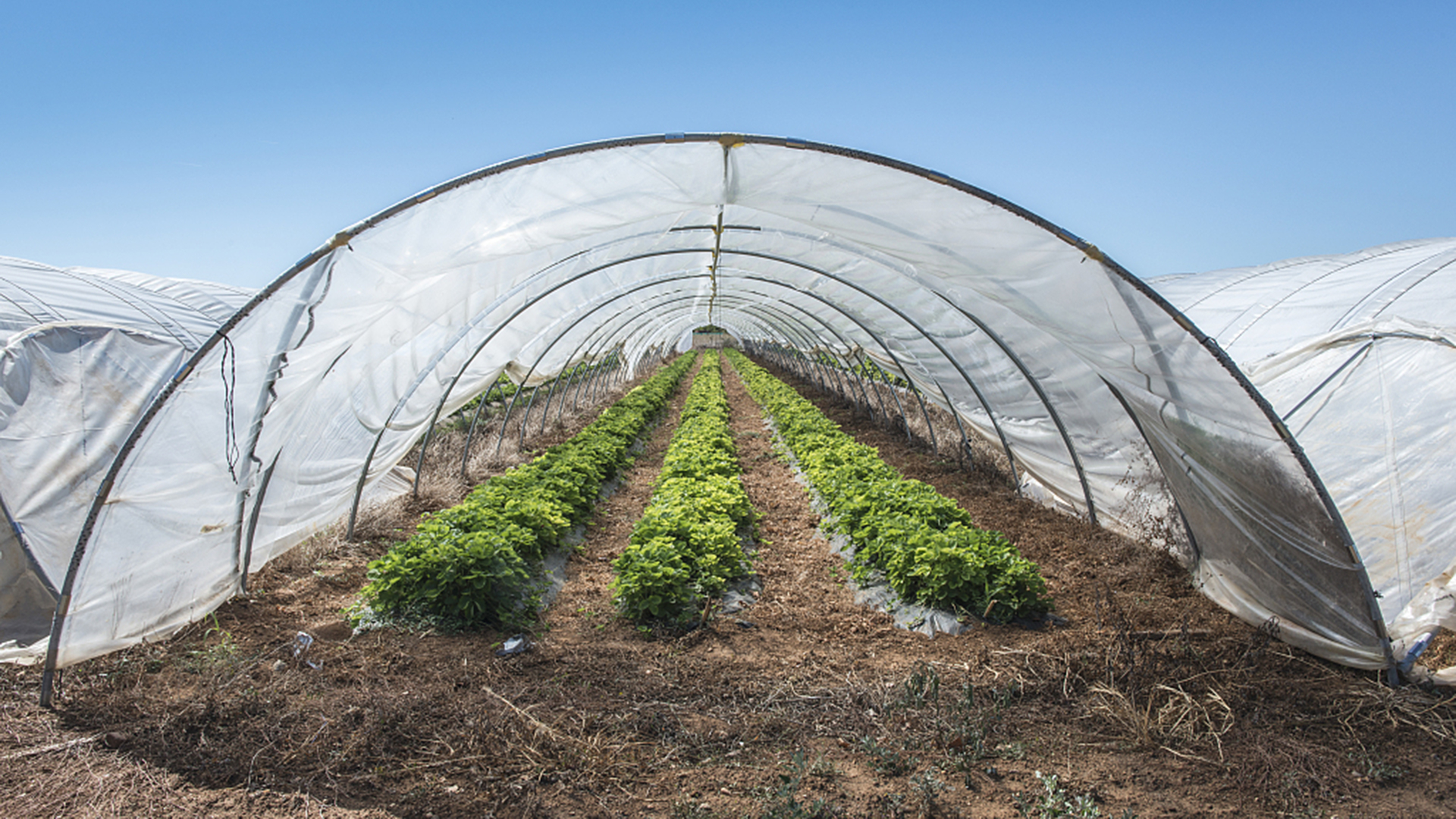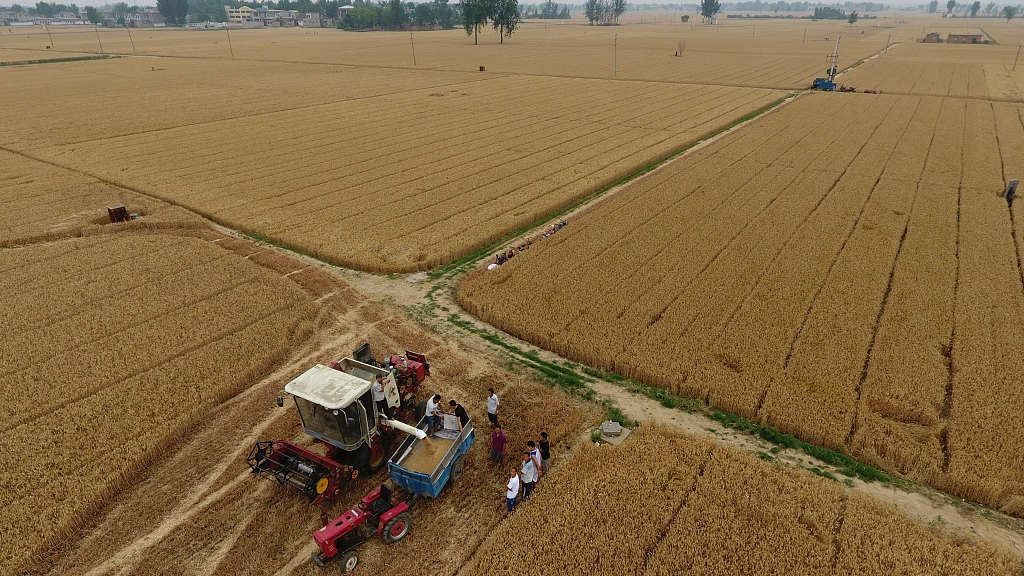

Every morning at 6:00 am, Qin Chao gets up and goes to check his strawberry greenhouses. Every time he looks at the beds of bright red berries, he can't help but imagine the wealth they would bring to his impoverished family.
Chao's wife has been suffering from schizophrenia and the high medical expenses have put a dent in his wallet. Now, with the support of the local government, he's giving the strawberry greenhouses a try.
"Strawberries in the greenhouse could sell for about 5.5 yuan or even 8.5 yuan for half a kilo. Around New Year, one can earn more than 14 yuan easily," Chao said. "I think it is an opportunity to make money so I went to the strawberry greenhouse to watch and learn."
Yuan Gou village used to be a poor village in Henan. It had 39 other poverty-stricken households like Qin's family. With policy support from the government at the end of 2017, this village eventually climbed up the poverty threshold.
In 2017, Xi Jinping, general secretary of the Communist Party of China (CPC) Central Committee, gave the directive to "implement the strategy of rural vitalization" as one of the highlights of the 19th CPC National Congress. He called it a major strategy that would have fundamental impact on the nation. What is this strategy? What are its basic elements and its ultimate goal? And why now, after decades of concern about its rural areas, from "A New Socialist Countryside" to "Targeted Poverty Alleviation," is China giving such priority to "Rural Vitalization"?
To appreciate the importance of rural vitalization, one must recognize its historical roots. Rural reform was the cradle of reform. It has been a perennial topic at every Party congress. The CPC came to power supported by peasants and farmers. But while great wealth was created in urban areas, rural residents are still suffering from poverty. Moreover, the wealth gap between urban and rural areas has increased.

Farmers use combine harvesters and other agricultural machinery to gather wheat in Hua County, Anyang City, Henan Province, which is known as the "Granary in North Henan," June 5, 2019. /VCG photo
The overall Rural Vitalization strategy is roughly divided into three stages, spanning 33 years. For the first three years, from 2018 to 2020, the CPC Central Committee will set up an institutional framework and policy system. Local governments choose some places as pilots, based on consideration of local conditions and practices. Yuan Gou village is one of the pilot villages in Mengzhou City.
Over the next 15 years, from 2020 to 2035, the goal is to achieve the modernization of agriculture and rural areas, which means narrowing the gap between urban and rural areas, breaking the dual structure in China.
The final 15 years, from 2036 to 2050, will be devoted to realizing the goal of all-round agriculture vitalization — strong agriculture, a beautiful countryside and well-off farmers.
Currently, pilot programs enable rural land-use rights to be transferred via markets, enabling farmers to sub-contract, lease, exchange or swap their land-use rights, or join shareholding entities with their farmland, all of which generate new income for farmers.

Copyright © 2018 CGTN. Beijing ICP prepared NO.16065310-3
Copyright © 2018 CGTN. Beijing ICP prepared NO.16065310-3